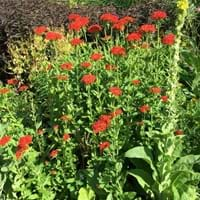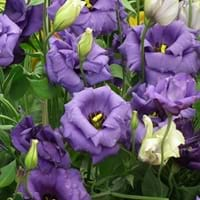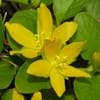Life Span
Perennial
Biennial
Type
Perennial
Flowering Plants, Grass, Herbs
Origin
Eastern Europe, Kazakhstan, Mongolia, Northwestern China, Russia
Southwestern United States, Mexico
Types
not available
'Balboa White' lisianthus, 'Forever Blue' lisianthus, 'Forever White' lisianthus, 'Lisa Pink' lisianthus
Number of Varieties
Not Available
Habitat
Banks
Grassland, Warmer regions
USDA Hardiness Zone
3-8
8-11
Sunset Zone
A1, A2, A3, 1a, 1b, 2a, 2b, 3a, 3b, 4, 5, 6, 7, 8, 9, 10, 14, 15, 16, 17, 18, 19, 20, 21, 22, 23, 24
1a, 1b, 2a, 2b, 3a, 3b, 4, 5, 6, 7, 8, 9, 10, 11, 12, 13, 14, 15, 16, 17, 18, 19, 20, 21, 22, 23, 24
Habit
Upright/Erect
Upright/Erect
Minimum Height
Not Available
Minimum Width
Not Available
Flower Color
Red, Orange, Rose, Salmon, Peach, Orange Red
White, Blue, Pink, Lavender, Blue Violet
Flower Color Modifier
Bicolor
Bicolor
Fruit Color
Brown
Not Available
Leaf Color in Spring
Green
Gray Green
Leaf Color in Summer
Green
Gray Green
Leaf Color in Fall
Green
Gray Green
Leaf Color in Winter
Light Green
Gray Green
Leaf Shape
Ovate elongated
Succulent
Plant Season
Spring, Summer
Spring, Summer
Sunlight
Full Sun, Partial Sun, Partial shade
Full Sun, Partial Sun
Type of Soil
Clay, Loam, Sand
Clay, Loam, Sand
The pH of Soil
Acidic, Neutral, Alkaline
Neutral, Alkaline
Soil Drainage
Average
Well drained
Bloom Time
Late Spring, Early Summer, Summer
Spring, Late Spring, Early Summer, Summer, Late Summer
Tolerances
Drought
Not Available
Where to Plant?
Ground
Container, Ground, Pot
How to Plant?
Divison, Seedlings
Seedlings, Stem Planting
Plant Maintenance
Medium
Medium
Watering Requirements
Do not let dry out between waterings
Form a Soil ring to water efficiently, It cannot sustain wet-feet, Keep the ground moist but not water-logged, Use Mulches to help prevent water loss during hot and windy weather, Water twice a day in the initial period
In Summer
Lots of watering
Lots of watering
In Spring
Moderate
Moderate
In Winter
Average Water
Average Water
Soil pH
Acidic, Neutral, Alkaline
Neutral, Alkaline
Soil Type
Clay, Loam, Sand
Clay, Loam, Sand
Soil Drainage Capacity
Average
Well drained
Sun Exposure
Full Sun, Partial Sun, Partial shade
Full Sun, Partial Sun
Pruning
In late autumn, Remove deadheads
Cut or pinch the stems, Prune ocassionally, Remove dead or diseased plant parts, Remove deadheads
Fertilizers
All-Purpose Liquid Fertilizer
All-Purpose Liquid Fertilizer
Pests and Diseases
Aphids, Red blotch, Slugs
Botrytis Blight, Cercospora leaf spot, Cucumber mosaic, Curvularia blotch, Downy mildew, Fusarium stem rot, Fusarium wilt, Impatiens necrotic spot, Lisianthus necrosis, Phyllosticta leaf spot, Pythium root rot, Rhizoctonia stem rot, Sclerophoma stem blight, Tobacco mosaic
Plant Tolerance
Drought
Drought
Flower Petal Number
Single
Single, Double, Semi-Double
Foliage Texture
Medium
Medium
Foliage Sheen
Glossy
Matte
Attracts
Butterflies, Hummingbirds
Bees, Butterflies
Allergy
Not Available
Chest tightness, Diarrhea, Dizziness, Nausea, Vomiting
Aesthetic Uses
Showy Purposes
Beautification, Bouquets, Showy Purposes, Used for decorating walls, fences, gates, hedges, etc.
Beauty Benefits
No Beauty Benefits
Not Available
Environmental Uses
Air purification
Air purification
Medicinal Uses
Not Available
Not Available
Part of Plant Used
Whole plant
Flowers
Other Uses
Used as Ornamental plant
Showy Purposes, Used for fragrance
Used As Indoor Plant
No
Yes
Used As Outdoor Plant
Yes
Yes
Garden Design
Bedding Plant, Feature Plant, Mixed Border
Bedding Plant, Container, Cutflower, Mixed Border, Wildflower
Botanical Name
LYCHNIS chalcedonica
EUSTOMA grandiflorum
Common Name
Maltese cross, Jerusalem cross, Burning love, Dusky salmon
Lisianthus
In Hindi
Maltese cross
Lisianthus
In German
Malteserkreuz
Lisianthus
In French
Maltese cross
Lisianthus
In Spanish
cruz de Malta
Lisianthus
In Greek
σταυρό της Μάλτας
Lisianthus
In Portuguese
cruz de Malta
Lisianthus
In Polish
krzyż maltański
Eustoma
In Latin
Duces crucis
Lisianthus
Phylum
Magnoliophyta
Magnoliophyta
Class
Magnoliopsida
Magnoliopsida
Order
Caryophyllales
Gentianales
Family
Caryophyllaceae
Gentianaceae
Clade
Angiosperms, Core eudicots, Eudicots
Angiosperms, Asterids, Eudicots
Tribe
Not Available
Not Available
Subfamily
Not Available
Not Available
Number of Species
Not Available
Importance of Maltese Cross Flower and Lisianthus
Want to have the most appropriate plant for your garden? You might want to know the importance of Maltese Cross Flower and Lisianthus. Basically, these two plants vary in many aspects. Compare Maltese Cross Flower and Lisianthus as they differ in many characteristics such as their life, care, benefits, facts, etc. Every gardener must at least have the slightest clue about the plants he wants to plant in his garden. Compare their benefits, which differ in many ways like facts and uses. The medicinal use of Maltese Cross Flower is Not Available whereas of Lisianthus is Not Available. Maltese Cross Flower has beauty benefits as follows: No Beauty Benefits while Lisianthus has beauty benefits as follows: No Beauty Benefits.
Compare Facts of Maltese Cross Flower vs Lisianthus
How to choose the best garden plant for your garden depending upon its facts? Here garden plant comparison will help you to solve this query. Compare the facts of Maltese Cross Flower vs Lisianthus and know which one to choose. As garden plants have benefits and other uses, allergy is also a major drawback of plants for some people. Allergic reactions of Maltese Cross Flower are Not Available whereas of Lisianthus have Chest tightness, Diarrhea, Dizziness, Nausea and Vomiting respectively. Having a fruit bearing plant in your garden can be a plus point of your garden. Maltese Cross Flower has no showy fruits and Lisianthus has no showy fruits. Also Maltese Cross Flower is flowering and Lisianthus is flowering. You can compare Maltese Cross Flower and Lisianthus facts and facts of other plants too.





